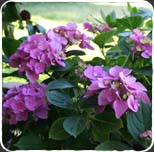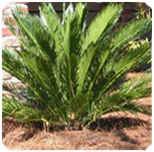
Toxic if Eaten
Hydrangeas are toxic if eaten. Oddly enough, this has not stopped some cultures from making teas or smoking the plant.
Blooming Season
Hydrangeas will bloom from early spring to late autumn. The exact time your flower bloom will depend on a variety of factors such as weather, water conditions and soil conditions.
Two Main Types of Hydrangeas

How to change the color of your hydrangeas
Most Hydrangea species are white but there are a number of Hydrangea flowers that change with the ph of the soil. These flowers can include blue, red, pink and purple. Acidic soils will generally produce blue flowers, neural soils will produce white petals and alkaline soils will produce pink flowers.
Changing a hydrangea from pink to blue will require the right amout of aluminum in the soil. Changing from blue to pink means subtracting aluminum from the soil. Before you start keep the following in mind.
WHITE HYDRANGEAS can NOT be changed to pink or blue by the grower.
If you live in a hot climate you will probably never see a “true red” hydrangea
To decrease the aluminum in the soil (change to Pink) try adding dolomitic lime several times a year. This will help rais the pH. ideally you want to have a pH of about 6.o. Anything above 6.4 and your hydrangea may experience an iron deficiency.
To increase aluminum in the soil (change to Blue) aluminum sulfate may be added to the soil. Be careful wehn adding the solution as too much may burn the roots. It is recommended that you water your plants a few times a year with 1 Tbsl of solution to every gallon of water.








